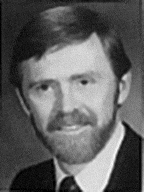


Editorial
Editorial

This issue contains the last installment of scientific reports for the XVII Congress of the IUCr. In order to do justice to the full range of crystallographic theory, technique, instrumentation, and applications presented at the Congress, it seemed appropriate to publish the full complement of highlights even if it was necessary to spread them over three issues. The breadth and strength of the technique of crystallography is also well illustrated by the structure on the cover of this issue. The structure of the 20S proteasome from the yeast S. cerevisiaedetermined by the Huber group is composed of 28 protein subunits and is the most complex macromolecular assembly yet seen in fine detail. At the other end of the spectrum is a no less interesting and potentially important assembly produced by crystal engineering, a nanoporous molecular sandwich made from guanidinium and alkanedisulfonate ions connected by hydrogen bonding networks. At least two dozen papers on new crystal structure determinations were published or discussed in Science and Nature in the months of May and April, including the structure of the protein leptin, recently linked to diabetes (F. Zhang et al., Nature, 387, p.206), novel Al77 clusters (A. Eckert et al., Nature, 387, p.397) and a crystalline construction of zirconium phosphate and a crown ether with novel properties (Zhang and Clearfield, Journal of American Chemical Society. 119, p.2751).
Ned Seeman, one of the pioneers in the field of molecular design and crystal engineering, and his designer DNA molecules were the subject of a lead article in the February 1997 issue of the popular science magazine Discover. Ned likens nucleic acids to molecular tinker toys from which he has fashioned intricate three dimensional networks including cubes, holiday junctions and truncated octahedra. The author of the Discover article describes futuristic predictions of microscopic computers, miniature medical robots and self replicating tiny machines and charaterizes Seeman's work as perhaps the most important step to date toward those distant goals.
Circle the Wagons
In a recent editorial Tony Gentile, Executive Admin. of the American Assn for Crystal Growth, noted that the AACG is as concerned with epitaxial thin films as with bulk crystal growth and other aspects of crystallography. He notes that in 1997, what were formerly independent Gordon Research Conferences have been combined into the GRC on Thin Films and Crystal Growth. As funding for research continues to tighten on a global scale it may become necessary for more groups having common interests to combine efforts and pool resources in forming confederations of societies and organizing joint meetings.


